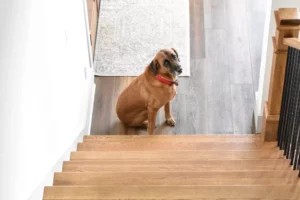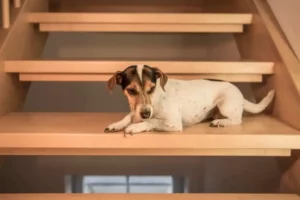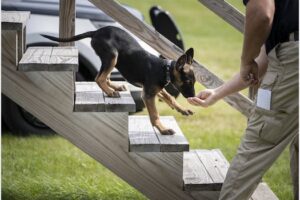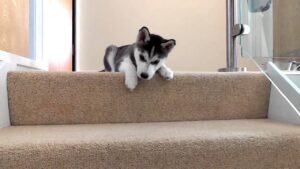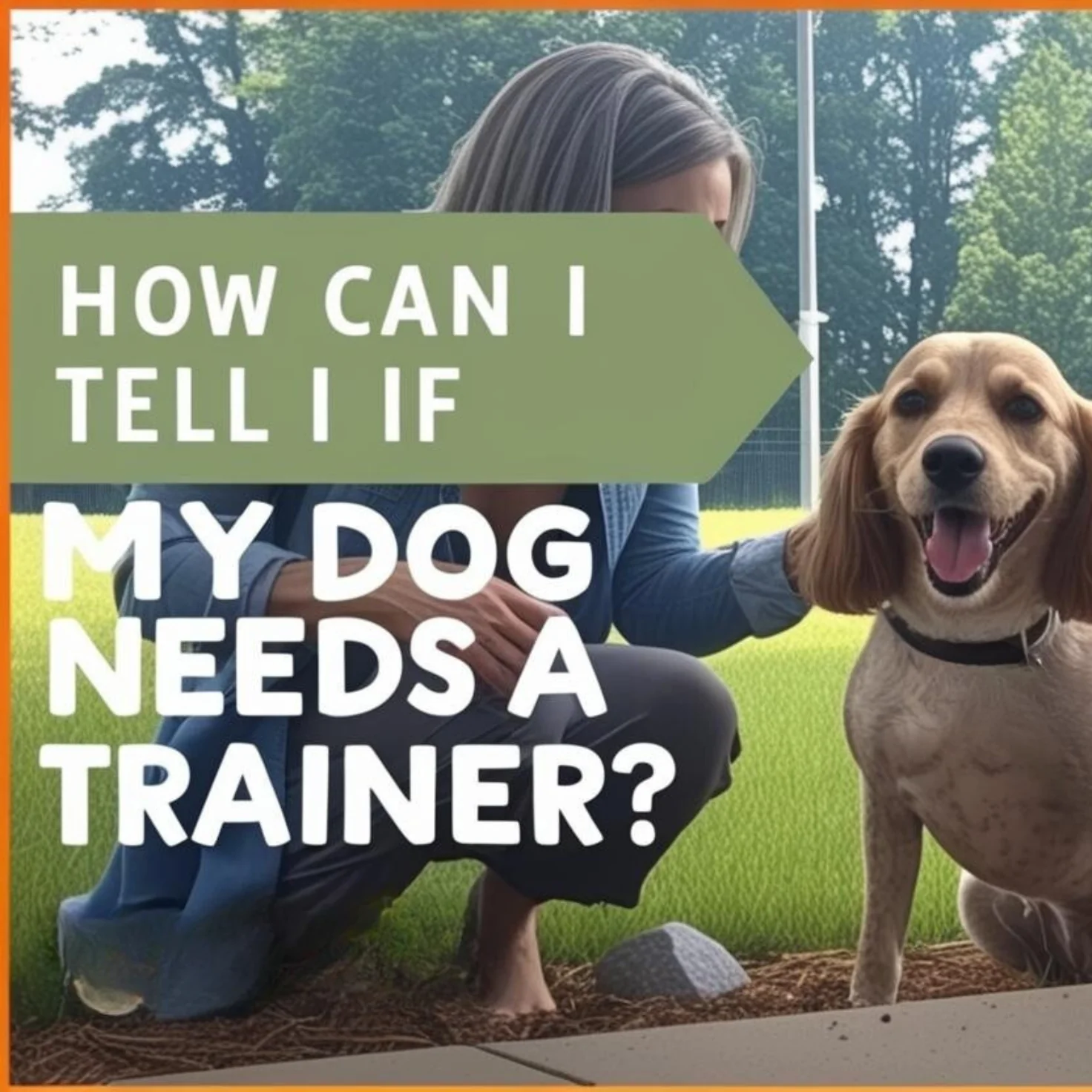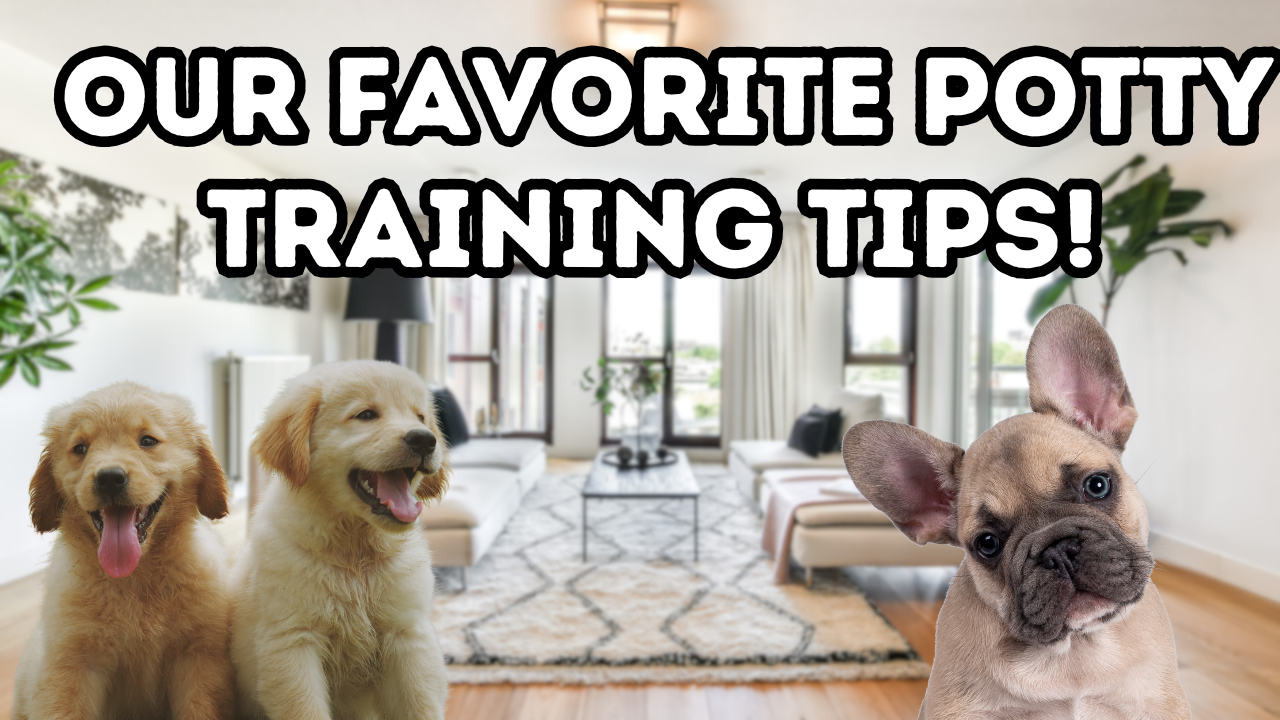Getting your puppy acclimated to the stairs in your home is not great just for their mental development, but it can also keep them safe!
Why is my puppy afraid of the stairs?
Some puppies take to the stairs naturally, but it is common, especially in younger and smaller pups, for them to view the stairs as a daunting thing! It's especially important to work with puppies on confronting and overcoming their fears so that they can live a more relaxed and happier life. Overall there are three main reasons a dog may be afraid of the stairs: lack of exposure, learned behavior, or a health issue.
Lack of Exposure
This simply means that the puppy has never had the experience of steps before. This will be the most likely case for a puppy, as well as the easiest to address. Follow the steps below and your puppy should conquer the steps in no time!
Learned Behavior
Somewhere along the way, the puppy had experiences that made led them to be fearful of stairs. This could happen to a puppy that has fallen down the stairs and hurt or scared themselves. They don't want to experience it again so they try to stay away.
Another case could be if a puppy has a more nervous personality and their owner may have yelled and accidentally scared them when they were about to go up or down some stairs. Dogs learn by association and they may have translated the situation to mean that stairs are bad, when the owner just wanted to stop them when they were too little because they might fall and hurt themselves.
Health Issue
The least likely event would be that the puppy has some joint injury that causes pain when trying to make the jump between steps or walk on an incline. If you think this may be the case, you can try to lay the dog on its side and manually move all the dog's limbs in and out of their natural range of motion. If they seem to flinch in pain or yelp at any point it's definitely time to reach out to your veterinarian.
How do I teach my puppy to use the stairs?
Is your puppy old enough to use the stairs?
If you have a super young puppy around 8 to 9 weeks old, it may be worth waiting a week or two to begin teaching them to use the stairs. This ensures they have the mental capacity, coordination, and physical ability to accomplish learning the stairs.
Get Equipped
When introducing anything new to your puppy, we recommend starting with a leash and collar to make sure you have ultimate control. The point of the leash and collar is not to drag and force the dog up. We do not like to ever physically force dogs into a behavior, it generally is not a very effective way to teach.
The goal is to use the leash and collar more to gently guide and encourage them to go up the steps. Ultimately the leash and collar are there to take control if we need if they were to get overwhelmed and prevent them from falling down the steps.
It is also essential to find something that motivates your dog when it comes to learning something new or overcoming something that is scary for them. If you don't already have a really good motivator in mind, test out some different ones to see which seems to get your puppy to focus on the most.
Remember that whatever you're working on, a training session should be a fun experience! We want to find something so attractive that it overrides their fear and helps them teach themselves that they can go up the stairs on their own!
Here are some examples of good motivators:
- Verbal Praise
- Physical Praise
- A Favorite Toy
- Treats
Going up
We started off going up the stairs in this video, as it is often easier for a dog to do this instead of coming down. When going down most dogs are more apprehensive seeing how far down the landing is.
We enticed this young puppy with verbal praise as well as a treat to get him moving! Whatever motivator you're using, we are trying to get the puppy to focus on it and to get excited so we can override their fear of the steps. We use this to guide them up the steps like Matt Covey does in the video. Starting off, we may reward them for every single step or every few. This will depend on how well the puppy is moving, the slower and more nervous, the more often we want to encourage and reward.
Do not be afraid of using some leash guidance to keep them on track, some light pressure will signal to the dog what we want. Remember we're not going to physically force them up, they should be raising their paws on their own and jumping up each step.
Once at the top of the steps give some praise and a brief moment to rest, then pick them up and go back to the bottom of the steps to try again. We repeat this process until they are moving up the steps without any leash input from you and doing so smoothly and naturally.
Going down
The same process is used for the dog to go down the stairs. Eventually, you can take away the treats once your dog can walk up and down the stairs calmly under their own will. As you can see, this process does go quickly! If your puppy is struggling, do not force them! There is absolutely no rush when it comes to stairs acclimation.
With a little work each day, your dog will be going up and down the stairs like a champ in no time!
Off-leash
Typically you won't need to do much off-leash once they are doing well with the leash. If they are still fearful, repeat everything we did with the leash on without it and they should soon be able to scale the stairs easily on their own.
Conclusion
For most dogs, this is really just a matter of tricking the dogs into believing they can do it. Identifying and using a motivator to get the dog excited enough to overcome that fear is the key to building their confidence so that they do not have to be afraid any longer!
If you're still having issues with fear of the stairs, reach out to us! Our Dog Boot Camp and our In-Home dog training lessons are highly customized and designed to give you and your dog the best life possible. For those looking for the absolute best training packages, check out our One Year In Home Training Packages and Board and Train Plus Package. We focus on obedience commands, leash walking, off-leash training, in-home behaviors, socializing, and many other training goals.

